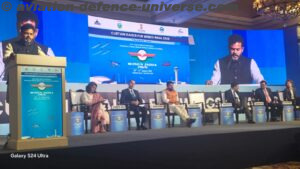- To Stimulate Growth And Development of Civil Aviation Sector
New Delhi. 13 November 2016. The objective of Regional Connectivity Scheme, UDAN (Ude Desh ka Aam Naagrik) is to enhance air passenger traffic in the country by stimulating demand on regional routes. Amount collected as Regional Connectivity Fund (RCF) will be used to provide financial support to airlines in the form of Viability Gap Funding (VGF) for operations under the Scheme. As per the directions of MoCA, RCF will be funded by a small levy per departure on all domestic flights other than the ones on Category II / Category IIA routes under RDG, RCS Routes and aircraft having maximum certified takeoff mass not exceeding 40,000 kg.
The RCF would channel funds generated from the sector to stimulate further growth and development of the sector itself. A part of the fund will also be contributed to by the states that have signed the UDAN MoU: as of date, 19 states have either signed or given their consent.
The national scheduled airlines providing services on domestic routes where such fee per departure is levied would also be eligible under the Scheme to avail benefits of RCS. Similarly, even the passengers would be benefited through additional connectivity on regional routes at prices which are at or below the airfare caps. Thus, the funds collected from national scheduled airlines will (i) benefit the same airlines and passengers from whom it is collected and (2) is further expected to lead to creation of regional air connectivity / services that would have spin-off benefits within the sector in terms of passengers taking other flights (not under RCS) and using airports / airport services that are not at concessional rates under RCS. The amount collected under the levy will be ploughed back into the sector.
Reducing costs for regional operators
UDAN recognizes the challenge of high costs faced by regional operators. Accordingly, the scheme brings down the operating cost for an airline by reducing taxes on aviation turbine fuel (ATF) and airport and other charges. Improving liquidity in the small plane leasing market will make it easy for entrepreneurs and airlines to start these routes. The winning bidder gets a three year exclusivity on the route so that the route can be matured and made profitable. The scheme uses the power of markets to discover to the lowest subsidy on the route. Half the seats can be sold by the winning bidder at market prices – this will also provide good information on the price the passengers on the route are willing to pay as and when the subsidy support goes away (between three and ten years).
Social obligation for a network business
It is important to put the amount expected to be collected under this levy in context of other businesses which create connectivity and benefit from the network effect, for example, telecom and railways. The telecom industry in India generated an annual net revenue of around Rs 1.8 lakh crores and paid 5% of its net revenues into a Universal Service Obligation (USO) fund, which collected Rs 9,835 crores in financial year 2016.
The social service obligations of the Indian Railways manifests itself in the Rs 33,004 cr loss (in FY2015) in the passenger and coaching segment to bring connectivity to the country (this loss is on the base of passenger fares collected of Rs 42,190 cr in the same year).
Global examples of promoting regional connectivity
The economic importance of promoting regional or remote connectivity is well understood across the world. Geographically large countries like the USA, Canada, Brazil and Australia among many others support regional and remote connectivity. UDAN is the first-of-its-kind scheme globally which harnesses the power of the markets to provide a public good.
The RCF is estimated to collect around Rs 500 cr (or US$ 75 mn) will be roughly one fourth the size of the US$ 290 mn that the US government would spend in promoting its Essential Air Service (EAS) in 2016. According to analyst reports, the aviation industry in India is expected to record revenues of Rs 0.7 lakh crores on domestic travel in this year – this levy could amount to only 0.6% of the total domestic revenues of the industry.
If the average viability gap funding required by the industry amounts to say Rs 1,000 per seat, this levy can create 50 lakh UDAN seats or 1 crore seats overall connecting currently underserved and unserved airports. With around 10 crore people expected to fly this year domestically even before the launch of the scheme, UDAN can significantly increase the base of travelers in India introducing large numbers of citizens to a more efficient transport.
Ministry’s expectation
The Ministry believes that this proposed levy is a small amount but which can go a long distance in bringing more travelers and cities to the Indian aviation network. Given the high growth in the sector we expect that the airlines could be in a position to absorb a part of the levy and not adversely impact the passengers significantly.
As per an ICAO study, the output multipliers of aviation is 3.25 which means that every Rupees 100 spent on air transport contributes to Rupees 325 worth of indirect benefits. More important, the employment multiplier is 6.10 which means that every 100 direct jobs in air transport sector results in 610 jobs in the economy as a whole. Therefore, the funds which are collected from national scheduled airlines for RCF can provide a further boost to the development of regional and national economies.






























































































































